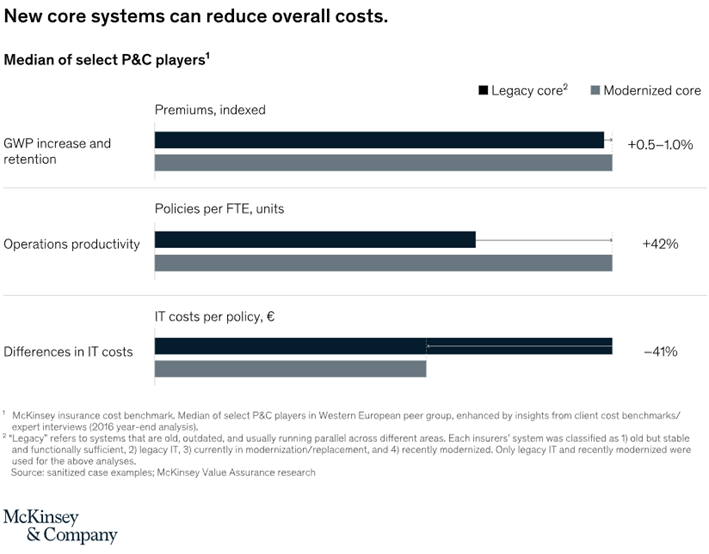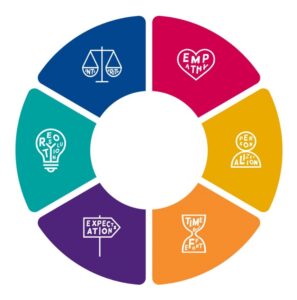The insurance industry is constantly evolving, and creating new products to meet customers’ changing needs is critical to staying competitive. Solving the product development challenges that arise alongside implementing these products, requires a careful consideration of various factors.
Every insurer has been there — long processes, incompatible data, and challenging integration. Even when the product is finally onboarded, it doesn’t function as advertised, and it seems no one on the support team will answer your call. Not only are other projects getting held up, but long delays and poor service means you’ve just cost yourself a customer. Does it really have to be this way?
In this blog, we’ll take a closer look at some of the critical challenges involved in creating new insurance products and how to resolve them to implement solutions effectively.
Identifying Customer Needs
Identifying customers’ needs is one of the biggest challenges in creating new insurance products. This involves extensive research to deeply understand customer preferences, pain points, and emerging trends. Insurers must invest time and resources into market research, surveys, and focus groups to gather insights into customer demands.
The challenge here is that customers’ needs can be diverse, depending on their age, income, location, and other factors. Insurance companies must strike a delicate balance between meeting the needs of different customer segments and ensuring that their new products are financially viable.
Regulatory Compliance
Another major challenge in creating new insurance products is navigating the complex regulatory landscape. Insurance is a heavily regulated industry, and insurers must comply with various guidelines set by state and federal regulators.
Ensuring new products comply with all applicable regulations can take time and effort. Failure to comply with regulations can result in significant fines, legal disputes, and reputational damage.
Designing the Right Product Features
Creating new insurance products involves designing features that meet customer needs while balancing financial considerations. Insurers must consider factors such as the level of coverage offered, the pricing of premiums, and the deductibles and co-payments.
Curating the right product features requires careful consideration of an amalgamation of customer needs, market trends, and risk management strategies. It can be difficult to ensure customers are provided with adequate coverage while still being able to afford the product.
Distribution Challenges
Another challenge in creating new insurance products is effectively distributing them to customers. Insurers need to consider the most effective channels for reaching their consumers, such as online platforms, agents, or brokers.
The challenge here is that different customer segments may prefer other distribution channels. Insurers need to tailor their distribution strategies according to their consumers. Insurers also must ensure that their agents and brokers are adequately trained to sell and service the new products.
Overcoming Challenges
Having an onboarding process that is fast, efficient, and well-supported is crucial, but it can be challenging. A successful onboarding process can be achieved by thorough planning, a focus on the process, and a dedication to customer service.
Pre-Planning
A crucial step to a smooth onboarding process is curating a dedicated team consisting of an account manager, product owner, technical lead, and process coordinator to oversee implementation. Each team member plays an essential role in ensuring a successful onboarding experience. The account manager builds relationships with the insurer and understands their business needs. Product owners are involved from the start, outlining the benefits and workings of the product and how it meets the insurer’s needs. The technical lead is responsible for delivering and installing the technology.
Preplanning should begin before the kick-off meeting. The team must define the deliverables, develop an implementation plan, and ensure it meets the insurer’s efficiency and speed criteria while avoiding system interruptions. Everything should work within the insurer’s guidelines and meet their deadlines.
Communication and Action
The next step is to initiate the implementation process. The team leader should contact relevant parties to confirm and establish a plan, and an implementation schedule should be created that considers any specific requirements.
The focus of meetings should shift towards actually implementing the product or service. The team should be dedicated to delivering a quality customer experience and supporting the insurer throughout the process.
Support
It is vital to have ongoing support during the onboarding and beyond. A single point of contact to address issues or questions, even if this person may change throughout the process, is crucial to ensuring streamlined customer service. Support should come from operations, IT, product development, and training.
Conclusion
Creating and implementing new insurance products requires careful consideration of customer needs, regulatory compliance, product design, and distribution. Insurers must invest resources into market research and distribution strategies to ensure their new products meet customer needs while remaining financially viable.
A platform that co-exists with existing infrastructure and integrates legacy systems will allow for a seamless digital transformation and onboarding process. Time-consuming and costly system migrations can be a thing of the past with an innovative solution that optimises your value chain. Insurers need a customer-centric and comprehensive platform and cutting-edge technology to empower their teams. Overcoming implementation challenges in such a way will allow insurance companies to stay competitive and meet the evolving needs of their customers.









